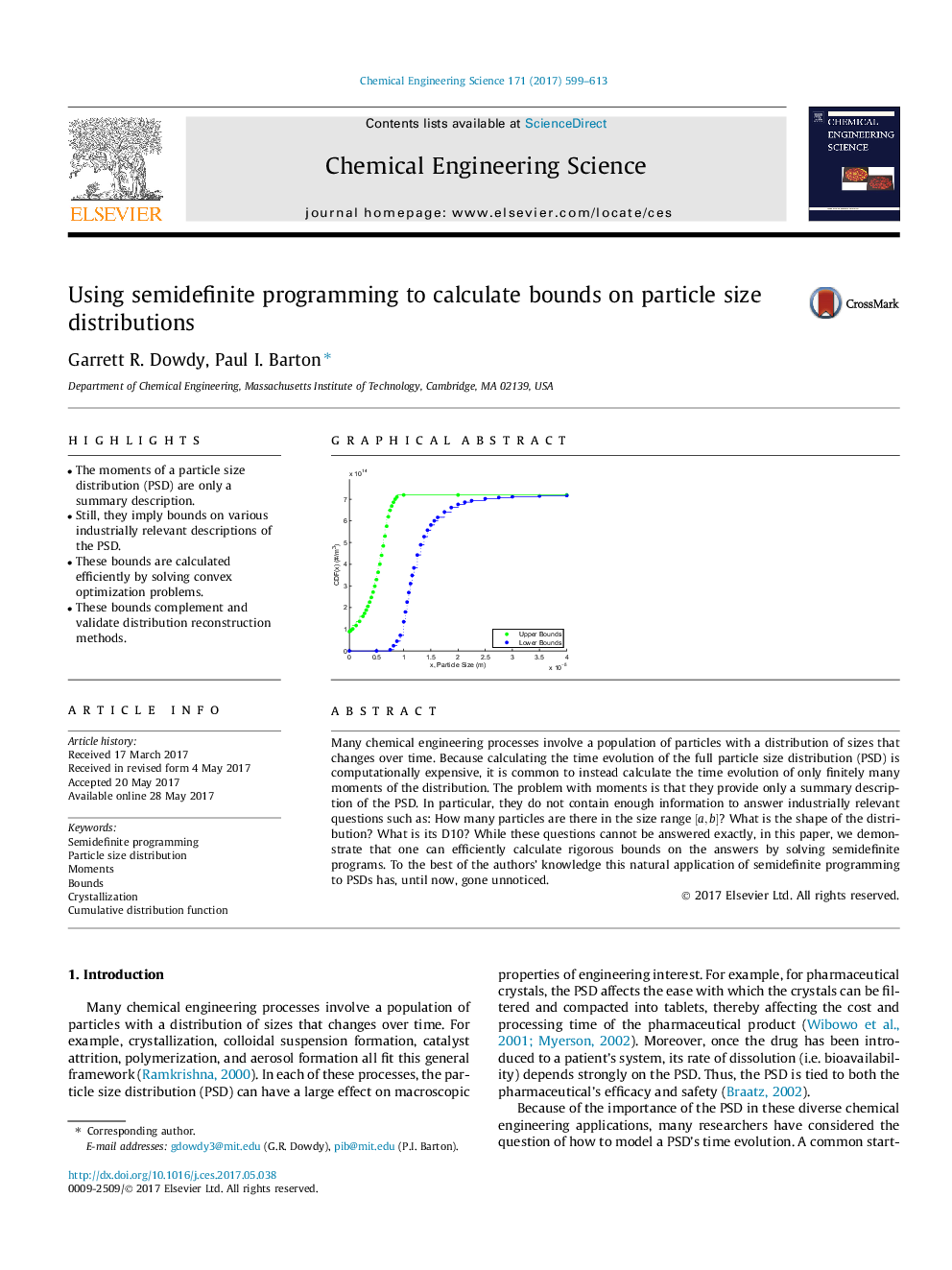| Article ID | Journal | Published Year | Pages | File Type |
|---|---|---|---|---|
| 6467082 | Chemical Engineering Science | 2017 | 15 Pages |
â¢The moments of a particle size distribution (PSD) are only a summary description.â¢Still, they imply bounds on various industrially relevant descriptions of the PSD.â¢These bounds are calculated efficiently by solving convex optimization problems.â¢These bounds complement and validate distribution reconstruction methods.
Many chemical engineering processes involve a population of particles with a distribution of sizes that changes over time. Because calculating the time evolution of the full particle size distribution (PSD) is computationally expensive, it is common to instead calculate the time evolution of only finitely many moments of the distribution. The problem with moments is that they provide only a summary description of the PSD. In particular, they do not contain enough information to answer industrially relevant questions such as: How many particles are there in the size range [a,b]? What is the shape of the distribution? What is its D10? While these questions cannot be answered exactly, in this paper, we demonstrate that one can efficiently calculate rigorous bounds on the answers by solving semidefinite programs. To the best of the authors' knowledge this natural application of semidefinite programming to PSDs has, until now, gone unnoticed.
Graphical abstractDownload high-res image (66KB)Download full-size image
